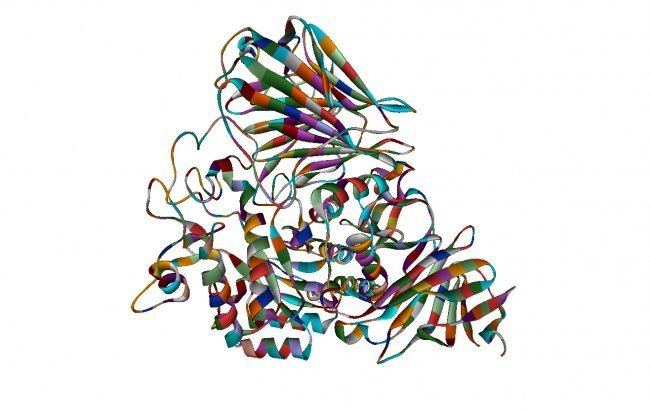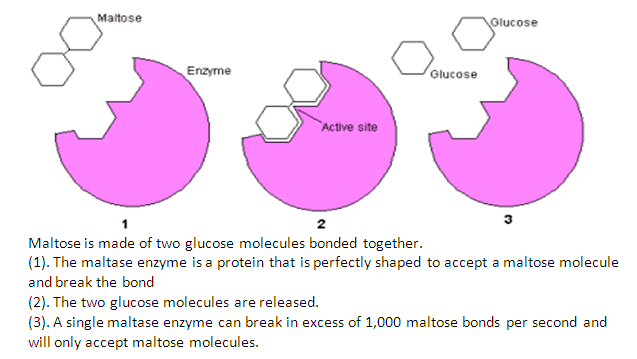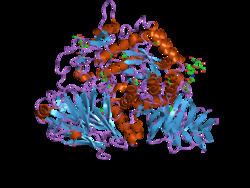EC number 3.2.1.20 ExPASy NiceZyme view | CAS number 9001-42-7 | |
 | ||
Teacup female maltase
Maltase (EC 3.2.1.20, alpha-glucosidase, glucoinvertase, glucosidosucrase, maltase-glucoamylase, alpha-glucopyranosidase, glucosidoinvertase, alpha-D-glucosidase, alpha-glucoside hydrolase, alpha-1,4-glucosidase, alpha-D-glucoside glucohydrolase) is an enzyme located in on the brush border of the small intestine that breaks down the disaccharide maltose. Maltase catalyzes the hydrolysis of maltose to the simple sugar glucose. This enzyme is found in plants, bacteria, and yeast. Acid maltase deficiency is categorized into three separate types based on the age of onset of symptoms in the affected individual.
Contents

In most cases, it is equivalent to alpha-glucosidase, but the term "maltase" emphasizes the disaccharide nature of the substrate from which glucose is cleaved, and "alpha-glucosidase" emphasizes the bond, whether the substrate is a disaccharide or polysaccharide.

In humans, maltase will break down the alpha form of the maltose.
Vampire bats are the only vertebrates known to not exhibit intestinal maltase activity.
Maltase dog



